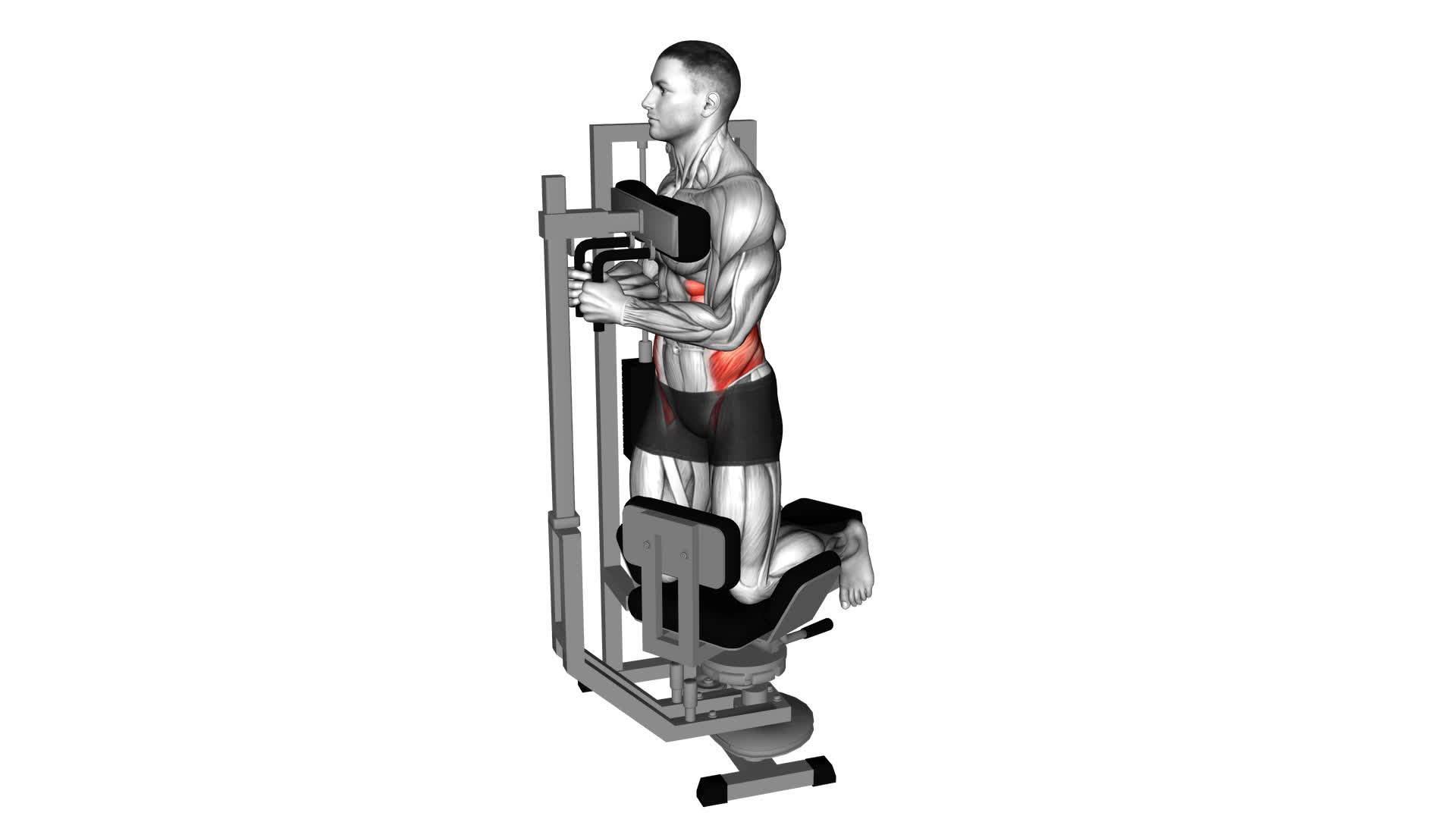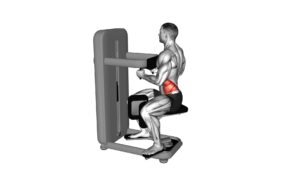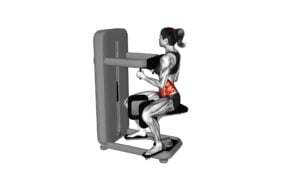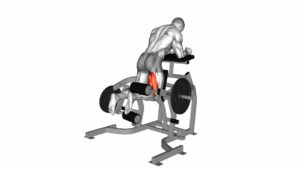Lever Kneeling Twist – Video Exercise Guide & Tips

Looking to strengthen your core and improve flexibility? The Lever Kneeling Twist is the perfect exercise for you!
Watch This Exercise Video
In this video exercise guide, we'll show you the proper form and technique, along with helpful tips for beginners.
With our easy-to-follow instructions and demonstrations, you'll be able to perform this exercise with confidence.
Get ready to feel the burn and see results with the Lever Kneeling Twist!
Key Takeaways
- The lever kneeling twist activates and strengthens core muscles.
- It improves core strength and flexibility.
- The exercise targets abdominal muscles, obliques, and lower back.
- It enhances stability, balance, and posture.
Benefits of Lever Kneeling Twist
To fully understand the benefits of the Lever Kneeling Twist, you need to know how it activates and strengthens your core muscles. This exercise is highly effective in improving core strength and increasing flexibility. The Lever Kneeling Twist specifically targets your abdominal muscles, obliques, and lower back, helping to tone and strengthen these areas. By engaging your core muscles, you not only enhance your stability and balance but also improve your overall posture.
The Lever Kneeling Twist involves rotating your torso while maintaining a stable kneeling position. As you twist, your core muscles are activated to stabilize your body and control the movement. This exercise also requires a certain level of flexibility, as you need to rotate your torso to its maximum range of motion. By regularly practicing this exercise, you can gradually increase your flexibility and improve your overall range of motion.
Additionally, the Lever Kneeling Twist helps to strengthen the muscles that support your spine, reducing the risk of back pain and injuries. By strengthening your core, you also enhance your performance in other physical activities, such as sports or weightlifting. Incorporating the Lever Kneeling Twist into your workout routine can lead to a stronger, more flexible core and improved overall fitness.
Proper Form and Technique
To ensure proper form and technique while performing the Lever Kneeling Twist, it's important that you maintain a stable kneeling position and engage your core muscles throughout the rotation. This exercise primarily targets your obliques, which are the muscles on the sides of your abdomen.
To maximize the effectiveness of the Lever Kneeling Twist, keep the following tips in mind:
- Start by kneeling on a mat or soft surface with your knees hip-width apart.
- Place your hands on the lever or bar, keeping your arms straight and shoulder-width apart.
- Keep your back upright and your chest lifted throughout the movement.
- As you rotate, focus on twisting from your waist, rather than using your arms to pull or push the lever.
- Exhale as you twist to engage your core muscles and maintain stability.
Common mistakes to avoid include using momentum to swing the lever, rounding your back, and not fully engaging your core. Remember to perform the exercise slowly and with control, focusing on the contraction of your obliques.
Equipment Needed for Lever Kneeling Twist
To perform the Lever Kneeling Twist exercise effectively and safely, there are a few pieces of necessary gear and essential equipment you'll need.
Firstly, you'll need a sturdy exercise mat or cushioned surface to kneel on. This will provide support and comfort for your knees and prevent any discomfort or injury.
Additionally, you'll need a stability ball. The stability ball is a key piece of equipment for this exercise as it provides an unstable surface, challenging your balance and engaging your core muscles. Make sure to choose a stability ball that's the appropriate size for your height and weight.
Lastly, you'll need a resistance band. The resistance band will add resistance to the exercise, making it more challenging and helping to strengthen your muscles. Choose a resistance band that provides enough tension for your fitness level.
With these necessary gear and essential equipment in place, you'll be ready to perform the Lever Kneeling Twist with confidence and achieve optimal results.
Tips for Beginners
Are you wondering how to get started with the Lever Kneeling Twist exercise as a beginner? Here are some tips to help you get started safely and effectively:
- Warm up: Before starting any exercise, it's important to warm up your body. This helps to increase blood flow and prepare your muscles for the workout.
- Start with lighter weights: As a beginner, it's important to start with lighter weights to avoid putting too much strain on your muscles and joints. Gradually increase the weight as you become more comfortable and confident with the exercise.
- Maintain proper form: It's crucial to maintain proper form throughout the exercise to prevent injuries. Keep your back straight, engage your core, and avoid twisting too forcefully.
- Listen to your body: Pay attention to how your body feels during the exercise. If you experience any pain or discomfort, stop immediately and consult with a fitness professional.
- Take it slow: As a beginner, it's important to take it slow and gradually increase the intensity and duration of the exercise. Rushing through the movement can lead to poor form and increased risk of injury.
Advanced Variations and Modifications
As you progress in your Lever Kneeling Twist exercise routine, you can explore advanced variations and modifications to challenge your muscles and enhance your overall fitness. These advanced modifications and progressions will take your workout to the next level, pushing your body to new limits.
One advanced modification you can try is to add resistance to the exercise. You can do this by holding a dumbbell or kettlebell in your hands while performing the twist. This will increase the intensity and engage your muscles even more.
Another advanced progression is to perform the Lever Kneeling Twist on an unstable surface, such as a Bosu ball or a balance disc. This will challenge your core stability and improve your balance as you twist.
You can also experiment with different tempos and ranges of motion. Slow down the movement and focus on controlling every aspect of the twist, or increase the speed for a more dynamic and intense workout. Additionally, you can increase the range of motion by twisting further to each side, stretching your muscles even more.
Remember to always listen to your body and progress at your own pace. These advanced modifications and progressions should only be attempted once you have mastered the basic Lever Kneeling Twist and have built a solid foundation of strength and stability.
Frequently Asked Questions
Can the Lever Kneeling Twist Help With Lower Back Pain?
The lever kneeling twist is a yoga pose that can definitely help with lower back pain. By incorporating yoga into your routine, you'll experience the benefits of increased flexibility, improved posture, and strengthened core muscles.
It's important to note that the lever kneeling twist mightn't be suitable for everyone, so it's always a good idea to consult with a healthcare professional or a certified yoga instructor.
If you're looking for alternative exercises, there are various core-strengthening exercises that can also help relieve lower back pain.
How Many Calories Can Be Burned by Performing the Lever Kneeling Twist?
Performing the lever kneeling twist can help you burn calories and engage multiple muscle groups. This exercise involves twisting your torso while kneeling and holding a lever for stability. By engaging your core, obliques, and back muscles, you can increase your heart rate and burn calories.
The exact number of calories burned will vary depending on factors such as your weight, intensity, and duration of the exercise. Remember to maintain proper form and consult a fitness professional for personalized advice.
Is the Lever Kneeling Twist Suitable for Individuals With Knee Injuries?
The lever kneeling twist can be modified to accommodate individuals with knee injuries. By using a cushion or pad under your knees, you can reduce the pressure on your joints while still benefiting from the exercise.
This modification allows you to engage your core muscles and work on improving your stability and balance. The lever kneeling twist is a great exercise for building core strength and can be a valuable addition to your fitness routine, even with knee injuries.
Can the Lever Kneeling Twist Help Improve Flexibility?
The lever kneeling twist is a great exercise to improve flexibility. By engaging your core muscles and twisting your torso, you can stretch and strengthen your body.
This exercise also has variations that can target different areas, such as the obliques or lower back. Adding these variations to your routine can help you achieve even more flexibility and core strength.
How Often Should the Lever Kneeling Twist Be Performed to See Results?
To see results from the lever kneeling twist, it's important to perform it with the right frequency. The lever kneeling twist can be done 2-3 times a week for best results.
However, keep in mind that everyone's body is different, so listen to your body and adjust the frequency accordingly.
Additionally, you can incorporate variations of the lever kneeling twist to challenge yourself and target different muscle groups.
Consistency and proper form are key to seeing improvements in flexibility and strength.
Conclusion
In conclusion, the lever kneeling twist is a highly beneficial exercise that targets the core and improves spinal mobility.
By following proper form and technique, using the necessary equipment, and gradually progressing through advanced variations, you can maximize the benefits of this exercise.
Whether you're a beginner or more advanced, incorporating the lever kneeling twist into your fitness routine can help strengthen your core and enhance overall fitness.

Author
Years ago, the spark of my life’s passion ignited in my mind the moment I stepped into the local gym for the first time. The inaugural bead of perspiration, the initial endeavor, the very first surge of endorphins, and a sense of pride that washed over me post-workout marked the beginning of my deep-seated interest in strength sports, fitness, and sports nutrition. This very curiosity blossomed rapidly into a profound fascination, propelling me to earn a Master’s degree in Physical Education from the Academy of Physical Education in Krakow, followed by a Sports Manager diploma from the Jagiellonian University. My journey of growth led me to gain more specialized qualifications, such as being a certified personal trainer with a focus on sports dietetics, a lifeguard, and an instructor for wellness and corrective gymnastics. Theoretical knowledge paired seamlessly with practical experience, reinforcing my belief that the transformation of individuals under my guidance was also a reflection of my personal growth. This belief holds true even today. Each day, I strive to push the boundaries and explore new realms. These realms gently elevate me to greater heights. The unique combination of passion for my field and the continuous quest for growth fuels my drive to break new ground.



